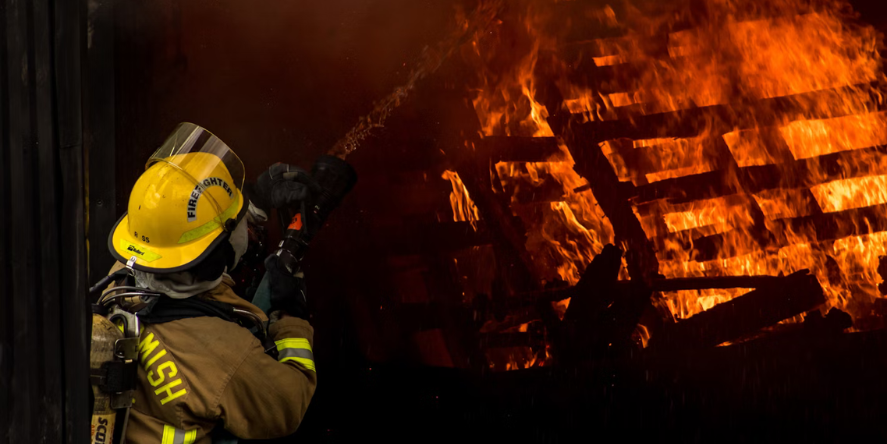There are plenty of difficult professions in this world, but none come close to the intensity and demands of firefighting. These brave professionals are willing to risk their lives every time they enter an accident zone.
In the United States, around 91% of fire departments are registered with the National Fire Department Registry. All these fire departments together house nearly 1,208,000 personnel, including paid, career, and voluntary firefighters.
Many risks come as a part and parcel of this profession. However, firefighters are also vulnerable to getting injured from their daily work equipment. A similar case has recently sparked a legal battle. In this article, we will discuss firefighters’ fight for justice in detail.
Multiple Risks Inherent to the Profession
Before we dive into the legal aspect, let’s talk about the several risks that firefighters must face daily. The most obvious threat to their lives and safety is the fire itself. The high heat of their usual work environment coupled with the toxic smoke can lead to severe burns and respiratory issues.
As per the Centers for Disease Control and Prevention (CDC), almost all smoke contains varying levels of carbon monoxide (CO), which is a toxic gas. It interferes with haemoglobin’s ability to carry sufficient oxygen to organs and vital tissues. In severe cases, CO can lead to death.
Then there is the risk of high physical exertion, which places considerable strain on the cardiovascular system. In general, it is found that firefighters suffer from poor overall cardiovascular health. If matters get worse, a firefighter may collapse on the spot.
Finally, several psychological stressors are also a huge part of this profession. These may take the form of interpersonal conflict, high variance in workload, poor sleep, traumatizing workplace events, and concerns over organizational fairness.
An Unknown Risk and Its Serious Consequences
Apart from the expected risks involved in firefighting, a few unknown dangers have made this profession a lot more risky. The most significant example is that of Class B firefighting foam used to put out liquid-fuel fires.
Aqueous Film Forming Foam (AFFF) has low viscosity and is made using a group of synthetic chemicals. They are known as per- and polyfluoroalkyl substances or PFAS, first developed in the 1940s. They were originally used to manufacture non-stick cookware and stain-resistant fabrics due to water and oil resistance.
Effective as AFFF may be, it is carcinogenic to humans. Firefighters were unaware of its health risks for decades, frequently coming into close contact with PFAS. According to TorHoerman Law, many developed life-threatening conditions like kidney and testicle cancer. In 2017, injured firefighters filed an AFFF lawsuit against PFAS manufacturers like 3M and DuPont.
The lawsuit became a class-action multi-district litigation (MDL) in 2018. Filed under two categories – water contamination and personal injury – the first half of the litigation was settled last year. As for the second half, firefighters have alleged that the defendants were aware of the aftermath but failed to issue any warnings.
Is winning this suit their only hope? It seems so, although compensation benefits from the Department of Veterans Affairs (VA) could be another option. Even so, the VA claims for exposure to AFFF may only be made in case of some lifelong disability and are extended on a case-to-case basis. In short, firefighters are in a tough battle no matter which route they choose.
The Fight for Legal Justice Continues
As of now, over 7,000 AFFF lawsuits are pending in the US District Court for the District of South Carolina. After 3M agreed to settle all water contamination cases for $10.3 billion, firefighters were optimistic that Bellwether trials for their lawsuits would be held in 2024.
That seems unlikely since a separate class of water contamination lawsuits involving Telomere-based AFFF has been taken up next. This AFFF is said to have 30% less fluorine than regular PFAS-based AFFF. Attorneys from both sides are currently preparing for another set of water contamination case trials.
As a result, personal injury case settlements will not happen this year. Even the first-ever Bellwether trials are expected to take place only after Telomere-based lawsuits are settled (hopefully by this year’s end).
If we follow the timeline of this litigation, it is clear that firefighters have fought a tough legal battle that’s been ongoing for six years. From the current scenario, it may take another year or two before their personal injury cases get an average settlement.
Then, the process of individual pay-outs will begin. In the final analysis, it seems like the struggle for justice must continue for a few more years.
Blog received on mail










